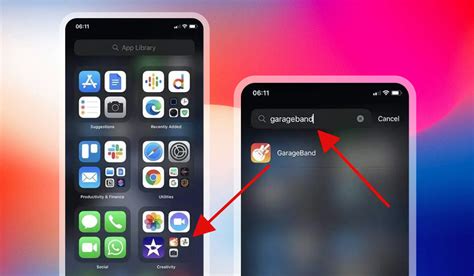
A little-known feature within the iPhone’s Messages app allows users to edit texts for up to 15 minutes after they are sent, providing a crucial safety net for typos or misstatements, although recipients are notified of the edits. This function, heralded as a game-changer, is part of a suite of features designed to enhance user experience and communication control, but its effectiveness hinges on both sender and receiver using iMessage.
Apple quietly rolled out the ability to edit and unsend messages, marking a significant shift in how users manage their digital communication. This function addresses a common frustration among smartphone users: the regret of sending a message with errors or sent to the wrong recipient. While the feature offers a valuable corrective tool, it comes with limitations and considerations that users should understand.
The edit feature in iMessage provides users with a 15-minute window to make changes to their sent messages. To edit a message, users simply long-press on the sent text and select the “Edit” option from the menu that appears. They can then modify the content of the message and tap the checkmark to save the changes. Recipients will see a small “Edited” label below the message, indicating that the content has been altered. Tapping on the “Edited” label will reveal the edit history, allowing recipients to view previous versions of the message.
Alongside the edit feature, iMessage also offers the ability to unsend messages. This function allows users to retract a message entirely within a two-minute window after sending it. To unsend a message, users long-press on the sent text and select the “Undo Send” option. The message will disappear from the recipient’s screen, replaced by a notification that the sender unsent the message.
However, these features are not foolproof and come with important caveats. The edit and unsend functions only work if both the sender and recipient are using iMessage. If the recipient is using SMS or a third-party messaging app, the edits and unsent messages will not be reflected on their end. This means that a message sent to an Android user, for example, cannot be edited or unsent using iMessage.
Furthermore, the recipient is always notified when a message has been edited. While this transparency is intended to prevent abuse of the feature, it also means that recipients will be aware of any corrections made, even if the changes are minor. Some users may find this notification intrusive or unnecessary.
Apple’s decision to introduce these features reflects a growing trend among messaging platforms to provide users with greater control over their communication. Other popular messaging apps, such as WhatsApp and Telegram, have offered similar edit and unsend functions for some time. These features aim to address the fast-paced and often impulsive nature of digital communication, allowing users to correct mistakes and prevent miscommunications.
The edit and unsend features in iMessage have been met with mixed reactions. Some users have praised the features as a valuable tool for correcting errors and preventing embarrassment. Others have expressed concerns about the potential for abuse, such as altering messages to misrepresent past conversations.
Despite these concerns, the edit and unsend features in iMessage are likely to remain a popular and useful tool for iPhone users. By providing users with greater control over their messages, Apple is helping to make digital communication more forgiving and less prone to misunderstandings.
The introduction of the “Edit” and “Undo Send” features in iMessage represents a significant shift in Apple’s approach to messaging. Historically, Apple has been relatively conservative in its adoption of new features, preferring to focus on stability and user experience. However, the growing popularity of edit and unsend functions in other messaging apps has likely influenced Apple’s decision to embrace these features.
The edit and unsend features are part of a broader trend towards greater user control in digital communication. As messaging apps become increasingly central to our daily lives, users are demanding more tools to manage their conversations and protect their privacy. Features such as end-to-end encryption, disappearing messages, and edit/unsend functions are all examples of this trend.
The impact of the edit and unsend features on communication patterns is still being studied. Some experts believe that these features will lead to more thoughtful and deliberate communication, as users will be less likely to send messages in haste. Others worry that the features will encourage users to be less accountable for their words, as they can always edit or unsend messages if they regret what they said.
Ultimately, the success of the edit and unsend features will depend on how users choose to use them. If used responsibly and ethically, these features can be a valuable tool for improving communication and preventing misunderstandings. However, if used maliciously, they can be used to manipulate conversations and spread misinformation.
The edit feature in iMessage allows users to make changes to their sent messages within a 15-minute window. This function can be useful for correcting typos, clarifying ambiguous statements, or adding additional information. However, it is important to use the edit feature responsibly and ethically. Users should avoid making changes that alter the meaning of the original message or misrepresent past conversations.
The unsend feature in iMessage allows users to retract a message entirely within a two-minute window after sending it. This function can be useful for preventing accidental disclosures, retracting messages sent to the wrong recipient, or deleting messages that were sent in anger or frustration. However, it is important to use the unsend feature sparingly and only when necessary. Overusing the unsend feature can make users appear indecisive or untrustworthy.
The edit and unsend features in iMessage are not without their limitations. As mentioned earlier, these features only work if both the sender and recipient are using iMessage. Additionally, the recipient is always notified when a message has been edited. These limitations are intended to prevent abuse of the features, but they can also be frustrating for users who want to make changes to messages sent to non-iMessage users or who want to edit messages without notifying the recipient.
Despite these limitations, the edit and unsend features in iMessage are a valuable addition to the iPhone’s messaging capabilities. These features provide users with greater control over their communication and help to make digital communication more forgiving and less prone to misunderstandings.
Apple continues to refine and improve its messaging features. Future updates to iMessage may include enhancements to the edit and unsend functions, such as the ability to edit messages for longer periods of time or to unsend messages without notifying the recipient. Apple may also introduce new messaging features, such as the ability to schedule messages to be sent at a later time or to create collaborative documents within iMessage.
The evolution of messaging apps is likely to continue as technology advances and user needs change. Messaging apps are becoming increasingly sophisticated and integrated into our daily lives. As messaging apps become more powerful and versatile, they will continue to play an important role in how we communicate with each other.
The introduction of the edit and unsend features in iMessage is a testament to Apple’s commitment to innovation and user satisfaction. By providing users with greater control over their communication, Apple is helping to make the iPhone a more valuable and user-friendly device. These features reflect the ongoing evolution of messaging technology and the growing importance of digital communication in our lives.
In-Depth Analysis:
The introduction of the edit and unsend features in iMessage marks a significant evolution in Apple’s messaging strategy. For years, users have clamored for the ability to correct mistakes or retract messages sent in haste, a feature already available on competing platforms like WhatsApp and Telegram. Apple’s implementation, while welcome, comes with caveats that highlight the company’s commitment to transparency and user awareness.
The 15-minute edit window provides a reasonable timeframe for correcting typos or clarifying ambiguities. The notification that a message has been edited serves as a safeguard against potential misuse, preventing senders from drastically altering the meaning of a conversation after the fact. However, this notification also introduces a level of self-consciousness, as recipients are immediately aware that a change has been made. This can be both a positive and a negative aspect of the feature. It promotes honesty but can also draw unwanted attention to minor corrections.
The two-minute unsend window is more restrictive but serves a different purpose. It’s designed to address situations where a message was sent to the wrong recipient or contained sensitive information that should not have been shared. The immediacy of the two-minute window is crucial, as it minimizes the risk of the message being read before it can be retracted. However, the short timeframe also means that users must act quickly to undo a send.
The limitation that these features only work between iMessage users is a significant drawback. In a world where cross-platform communication is increasingly common, the inability to edit or unsend messages sent to Android users or those using other messaging apps limits the usefulness of these features. This limitation is likely due to the proprietary nature of iMessage and the lack of standardization across different messaging platforms.
The introduction of these features raises important questions about the nature of digital communication and the responsibility of messaging platforms. Should users have the right to edit or unsend messages after they have been sent? What are the potential consequences of allowing such features? How can messaging platforms balance the need for user control with the need for transparency and accountability?
Some argue that the ability to edit and unsend messages undermines the integrity of communication. They fear that these features could be used to manipulate conversations, spread misinformation, or cover up wrongdoing. Others argue that these features are essential for promoting responsible communication and preventing misunderstandings. They believe that users should have the right to correct their mistakes and retract messages that they regret sending.
Ultimately, the impact of these features will depend on how users choose to use them. If used responsibly and ethically, they can be a valuable tool for improving communication and preventing misunderstandings. However, if used maliciously, they can be used to manipulate conversations and spread misinformation.
Apple’s decision to introduce these features reflects a growing trend towards greater user control in digital communication. As messaging apps become increasingly central to our daily lives, users are demanding more tools to manage their conversations and protect their privacy. Features such as end-to-end encryption, disappearing messages, and edit/unsend functions are all examples of this trend.
The evolution of messaging apps is likely to continue as technology advances and user needs change. We can expect to see messaging apps become increasingly sophisticated and integrated into our daily lives. As messaging apps become more powerful and versatile, they will continue to play an important role in how we communicate with each other.
Background Information:
The history of messaging apps is a story of constant innovation and evolution. From the early days of SMS to the rise of instant messaging apps like AIM and ICQ, messaging has always been a central part of the digital experience. As smartphones became more prevalent, messaging apps evolved to take advantage of the new capabilities of these devices.
iMessage was introduced by Apple in 2011 as a built-in messaging service for iOS devices. It offered features such as read receipts, typing indicators, and the ability to send photos and videos. iMessage quickly became a popular alternative to SMS, particularly among iPhone users.
Over the years, Apple has continued to add new features to iMessage, such as stickers, animated effects, and app integrations. The introduction of the edit and unsend features is the latest example of Apple’s commitment to innovation and user satisfaction.
The decision to introduce these features was likely influenced by the growing popularity of edit and unsend functions in other messaging apps. WhatsApp, for example, introduced the ability to delete messages for everyone in 2017. Telegram has offered edit and unsend functions for even longer.
Apple’s implementation of these features is unique in several ways. The 15-minute edit window is longer than the edit window offered by some other messaging apps. The notification that a message has been edited is also a distinguishing feature.
The introduction of these features also reflects Apple’s broader strategy of focusing on user privacy and security. Features such as end-to-end encryption and the ability to control data sharing are all examples of this strategy.
Expanded Context:
The edit and unsend features in iMessage are part of a larger trend towards greater user control in digital communication. This trend is driven by several factors, including the increasing importance of messaging apps in our daily lives, the growing awareness of privacy concerns, and the desire for more control over our digital footprint.
Messaging apps have become essential tools for communication, both personal and professional. We use messaging apps to stay in touch with friends and family, to collaborate with colleagues, and to conduct business transactions. As messaging apps become more integrated into our lives, we demand more control over how we use them.
Privacy concerns have also played a significant role in the development of user control features. Users are increasingly aware of the risks of data breaches and surveillance. They want to be able to protect their privacy and control how their data is used.
The desire for more control over our digital footprint is another factor driving the trend towards user control. We want to be able to manage our online presence and remove information that we no longer want to be public.
Messaging apps are responding to these demands by introducing features that give users more control over their communication. These features include end-to-end encryption, disappearing messages, and edit/unsend functions.
The evolution of messaging apps is likely to continue as technology advances and user needs change. We can expect to see messaging apps become increasingly sophisticated and integrated into our daily lives. As messaging apps become more powerful and versatile, they will continue to play an important role in how we communicate with each other.
The introduction of the edit and unsend features in iMessage is a significant step forward in the evolution of messaging technology. These features provide users with greater control over their communication and help to make digital communication more forgiving and less prone to misunderstandings.
Potential Implications:
The introduction of the edit and unsend features in iMessage has several potential implications for individuals, businesses, and society as a whole.
For individuals, these features can provide greater peace of mind and reduce the stress associated with digital communication. The ability to correct typos or retract messages sent in haste can prevent embarrassment and misunderstandings.
For businesses, these features can improve communication efficiency and reduce the risk of errors. The ability to edit messages can help to ensure that information is accurate and up-to-date. The ability to unsend messages can prevent accidental disclosures of confidential information.
For society as a whole, these features can promote more responsible and thoughtful communication. The knowledge that messages can be edited or unsent may encourage users to be more careful about what they say online.
However, there are also potential risks associated with these features. The ability to edit messages could be used to manipulate conversations or spread misinformation. The ability to unsend messages could be used to cover up wrongdoing or erase evidence of illegal activity.
It is important to use these features responsibly and ethically. Users should avoid making changes that alter the meaning of the original message or misrepresent past conversations. They should also avoid using the unsend feature to cover up wrongdoing or erase evidence of illegal activity.
Messaging platforms also have a responsibility to prevent the misuse of these features. They should implement safeguards to detect and prevent manipulation of conversations and the erasure of evidence.
The edit and unsend features in iMessage are a powerful tool, but they must be used responsibly and ethically. By using these features wisely, we can improve communication and promote a more responsible and trustworthy digital environment.
Ethical Considerations:
The edit and unsend features in iMessage raise several ethical considerations. These features have the potential to be used for both good and bad purposes, and it is important to understand the ethical implications of their use.
One of the main ethical concerns is the potential for these features to be used to manipulate conversations or spread misinformation. By editing messages after they have been sent, users could alter the meaning of the original message and mislead recipients. This could have serious consequences, particularly in situations where communication is used to make important decisions.
Another ethical concern is the potential for these features to be used to cover up wrongdoing or erase evidence of illegal activity. By unsending messages, users could delete evidence of their actions and prevent accountability. This could have serious consequences for justice and the rule of law.
It is important to use these features responsibly and ethically. Users should avoid making changes that alter the meaning of the original message or misrepresent past conversations. They should also avoid using the unsend feature to cover up wrongdoing or erase evidence of illegal activity.
Messaging platforms also have a responsibility to prevent the misuse of these features. They should implement safeguards to detect and prevent manipulation of conversations and the erasure of evidence. These safeguards could include:
- Maintaining a log of all edits and unsends
- Requiring users to provide a reason for editing or unsending a message
- Notifying recipients when a message has been edited or unsent
- Limiting the number of times a message can be edited or unsent
By implementing these safeguards, messaging platforms can help to ensure that these features are used responsibly and ethically.
The edit and unsend features in iMessage are a powerful tool, but they must be used with caution. By understanding the ethical implications of their use, we can help to prevent these features from being used for harmful purposes.
Future Trends:
The evolution of messaging apps is likely to continue at a rapid pace in the coming years. We can expect to see several new trends emerge, including:
- Increased integration of messaging apps with other platforms and services
- Greater use of artificial intelligence (AI) in messaging apps
- Enhanced security and privacy features
- More focus on user control and customization
- Expansion of messaging apps into new areas, such as e-commerce and healthcare
Messaging apps are already becoming increasingly integrated with other platforms and services. For example, many messaging apps now allow users to share content from other apps, such as YouTube and Spotify. We can expect to see this trend continue as messaging apps become more central to our digital lives.
AI is also playing an increasingly important role in messaging apps. AI-powered chatbots can be used to provide customer support, answer questions, and automate tasks. We can expect to see AI become even more prevalent in messaging apps in the future.
Security and privacy are also major concerns for messaging app users. We can expect to see messaging apps continue to enhance their security and privacy features, such as end-to-end encryption and the ability to control data sharing.
User control and customization are also becoming increasingly important. Users want to be able to customize their messaging experience and control how their data is used. We can expect to see messaging apps offer more options for customization and control in the future.
Finally, messaging apps are expanding into new areas, such as e-commerce and healthcare. For example, some messaging apps now allow users to make purchases directly from within the app. We can expect to see messaging apps continue to expand into new areas in the future.
The future of messaging apps is bright. As technology advances and user needs change, messaging apps will continue to evolve and play an important role in how we communicate with each other.
Conclusion:
The introduction of the edit and unsend features in iMessage is a significant development in the world of digital communication. These features provide users with greater control over their messages and offer a safety net for correcting errors or retracting regrettable sends. While the implementation has limitations, such as the requirement for both sender and receiver to be using iMessage and the notification of edits, it reflects a broader trend toward empowering users in the digital space.
The impact of these features will depend on how responsibly and ethically they are used. While they can enhance communication by allowing for corrections and preventing misunderstandings, they also present potential risks of manipulation and misuse. Messaging platforms have a crucial role to play in implementing safeguards and promoting responsible usage.
As technology continues to evolve, we can expect to see further advancements in messaging capabilities, with a focus on user control, security, and customization. The edit and unsend features in iMessage represent a step in this direction, highlighting the ongoing effort to create a more user-friendly and forgiving digital communication landscape. The key will be to balance the benefits of these features with the need for transparency and accountability, ensuring that they are used to enhance communication rather than undermine it. The value of features like edit and unsend lies in promoting more thoughtful and deliberate communication. By giving users the opportunity to review and revise their messages, these tools can help to reduce impulsive sends and promote more careful consideration of the content being shared. This can lead to more meaningful and productive conversations, both personally and professionally. However, it is crucial to acknowledge the potential for abuse. The ability to alter messages after they have been sent could be exploited to distort facts, spread misinformation, or manipulate others. Similarly, the unsend feature could be used to cover up mistakes or evade accountability. To mitigate these risks, it is essential for users to exercise caution and discretion when using these features. They should avoid making changes that alter the original intent of the message or that could mislead recipients. They should also refrain from using the unsend feature to hide wrongdoing or avoid responsibility. Messaging platforms also have a responsibility to implement safeguards that prevent misuse. This could include measures such as logging edits and unsends, requiring users to provide a reason for making changes, and notifying recipients when a message has been altered. Ultimately, the success of these features will depend on a shared commitment to ethical and responsible communication. By using them thoughtfully and carefully, we can harness their potential to enhance our interactions and build stronger relationships.
Frequently Asked Questions (FAQ):
- What exactly does the iMessage edit feature do? The edit feature in iMessage allows you to make changes to a sent message within 15 minutes of sending it. You can correct typos, clarify statements, or add additional information. The recipient will see that the message has been edited.
- How do I edit a message in iMessage? To edit a message, long-press on the sent text bubble. A menu will appear, and you should select the “Edit” option. Make your changes and tap the checkmark to save.
- What happens when I edit a message? Does the recipient know? Yes, the recipient is notified that you edited the message. A small “Edited” label appears below the message. Tapping on this label reveals the edit history, allowing the recipient to see previous versions of the message.
- What is the “Undo Send” feature in iMessage, and how does it work? The “Undo Send” feature allows you to retract a message entirely within two minutes of sending it. To use it, long-press on the sent message and select “Undo Send”. The message disappears from the recipient’s screen, replaced by a notification that you unsent the message.
- Do the edit and “Undo Send” features work if I’m messaging someone with an Android phone? No, these features only work if both the sender and recipient are using iMessage. If you’re messaging someone using SMS or a third-party messaging app (like on an Android phone), the edits and unsent messages won’t be reflected on their end.









